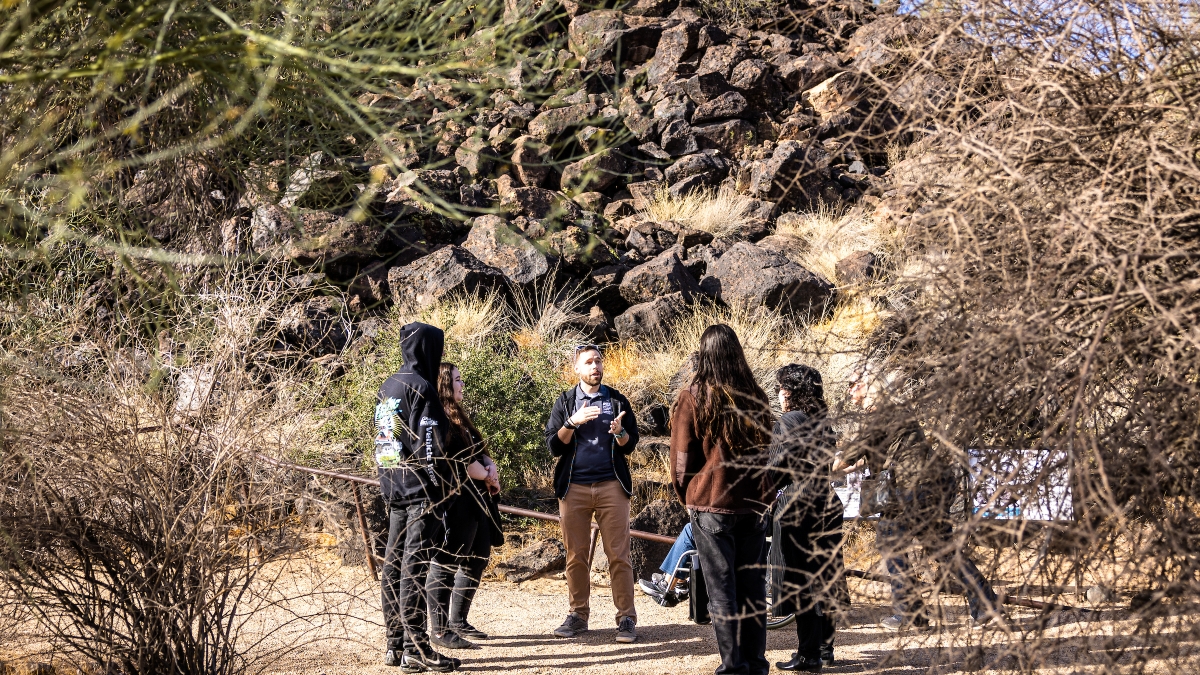African American actress Regina King is the star in an HBO adaptation of D.C.’s “The Watchmen,” premiering Oct. 20; Marvel’s Pakistani American superhero Kamala Khan is getting a standalone series on Disney Plus; “Captain Marvel” became the first female-led superhero film to pass the billion-dollar mark this year.
All three milestones represent a growing Hollywood trend of including more women and minorities in superhero and comic book media. Many fans see steps such as these as both positive and overdue, considering the amount of diversity in fandom. Yet stereotypes around what a “geek,” “nerd” or “fan” looks like still persist — perhaps due to popular shows such as “The Big Bang TheoryAn American television sitcom that stars white male physicists who share geeky and socially awkward tendencies.” or vocal minorities that protest these changes.
ASU Now talked to Arizona State University film and media studies instructor Michelle Martinez about the pervasiveness of these stereotypes and how we can shift the narrative.
Editor's note: Answers have been edited for length and clarity.
Question: When the general public thinks of a nerd or geek, usually the stereotype of a white, socially awkward teen male comes to mind. Where did this stereotype originate?
Answer: We have a history in the media of the overrepresentation of whiteness and the underrepresentation of non-whiteness. Since the earliest origins of film and television, black, Latinx, indigenous and Asian Americans have been stereotyped, with an absence of nuance. In those limited representations, the nerd was not among the earlier character tropes.
Mary Bucholtz has written about this extensively. In a paper she published in 2001 called “The Whiteness of Nerds: Superstandard English and Racial Markedness,” Bucholtz argues that white nerds are “hyperwhite” because they do not engage in cultural markersMartinez says that cultural markers are signs and word/phrase uses that signify the knowledge of hip-hop music or other aspects of what is seen as cool, which usually is something deriving from black culture. that originate in non-white spaces, particularly language markers. So the stereotype started in high schools and campuses with white kids who either self-identified or were labeled as nerd by cool kids because they possessed a mastery of the English language and rejected performances of the indicators of what is marked as cool.
Q: If you go to any comic or pop culture convention around the country, you’ll find a diverse group of attendees, in both race and gender. So why is the white male nerd stereotype so prevalent in society still?
Answer: Comicons, gaming conventions and superhero, fantasy and sci-fi film franchise opening nights will certainly draw out nerds of every race, gender and ethnicity. You will also find this diversity in many online spaces containing these interests. My thoughts on why this nerd stereotype still prevails is because there are many real-life examples of white nerds who are highly successful and in the public eye.
It took until the release of the film “Hidden Figures” in 2016 for Katherine Johnson and Dorothy Vaughan to be publicly recognized for their superior intellect. So, while this is changing in comic and pop culture venues, we still have a way to go in other spaces.
Q: There are critics who consider the inclusion of POC (people of color) or female superheroes or characters to be tokenism or pandering. Why is this?
A: Traditionally, the primary comic characters in mainstream media have been white men, and when there is diversity, it feels manufactured.
“Manufactured diversity” is the term I use for media products that have a superficial use of inclusion. Diversity is manufactured if the characters have no nuance or specificity, no relationship to their home communities, are written as caricatures or stereotypes and are portrayed as in need of or dependent on the white main character.
Q: What are some examples of content that are representing diversity well?
A: In the comic books, Marvel’s “X-Men" has had many queer and characters of color. Marvel also gave us Miles MoralesIn the animated feature "Spider-Man: Into the Spider-Verse.", an Afro-Latino Spider-Man, and it ended up winning an Oscar for best animated feature. Marvel’s run on Netflix, which produced "Luke Cage," made progress by centering the action in Harlem with nuanced characters that acknowledged the array of black cultures and diaspora.
Looking at DC Comics, they have plans for full-length features for the Cyborg character and have sequels in the works for Aquaman. So as far as male superheroes of color, we’ve got a healthy start. The CW has rebranded themselves as the place to go for DC comic TV. “Riverdale,” “Supergirl,” “Batgirl,” “The Flash,” “Arrow” and “Legends of Tomorrow” have women and LGBTQ characters given more visibility. “Black Lightning” is about a family of black superheroes living in an African American community, and the white characters are the supporting characters. CW also produced an animated run of the superhero Vixen, an African American woman.
HBO has produced a version of DC’s “Watchmen” starring Regina King as Sister Night, so that gives fans another strong female character of color and the potential to translate into cosplay, costumes and merch. King’s Sister Night also lets the world see a black woman as a fully formed superhero who kicks major (expletive), and that kind of representation has been needed for a very long time.
Q: It also seems that some of the more popular “nerd” content has been created by white men. Is that shifting? What are ways to encourage more people of color or women to be content creators?
A: This is absolutely shifting, slowly, but shifting. Since the various movements like #metoo, #oscarsowhite and #blacklivesmatter, call-out culture and the shifting of power happening in Hollywood, the gatekeepers are either being replaced or eliminated. Also, many content creators who major in film anymore have studied representation in film and are more dedicated to inclusion. Many studios have created internships and fellowship programs to boost diversity.
I think the biggest impact are all of the tutorials on YouTube of how to draw, how to make comics and how to animate. This gets young kids and people of all ages started on making their own (content). Comic culture and fandom has always been linked to DIY and making. From cosplay to zines and comics themselves, this is a fan-run and fan-centered industry, so it is just a matter of time before more truly inclusive content emerges.
Q: What do you think it will take to ultimately change the narrative surrounding nerd or geek culture to be more inclusive?
A: There are several online communities and cons/expos dedicated to more inclusive nerd culture. Here are a few of the ones I know of:
- Black Girl Nerds
- Geeks of Color
- The Nerds of Color
- A Tribe Called Geek
- The Black Geeks
- Latino Comic Expo
- Nerdtino Expo
- SOL-CON
And there are an increasing number of panels at some of the major fan/comic fests that are dedicating space and conversations to this issue.
—
If you are interested in checking out some media created by women or people of color, here are some personally recommended by Martinez that you can access at the ASU Library:
- “Love and Rockets” series by the Hernandez brothers
- Marvel’s “Black Panther” series by Ta-Nehisi Coates
- “Aya” by Marguerite Abouet
- “(H)afrocentric” by Juliana “Jewels” Smith
- “Concrete Park” by Erika Alexander and Tony Puryear
- “The Boondocks” by Aaron McGruder
- “Rez Luv” by Dale Deforest
Top image: Kamala Khan, aka Ms. Marvel, a Pakistani American superhero. Image courtesy of Marvel Studios
More Arts, humanities and education

Petroglyph preserve celebrates 30th anniversary with ancient, modern tales
The Deer Valley Petroglyph Preserve provides a beautiful walk through a pristine desert where chuckwalla lizards are as plentiful as the cacti that comes in many shapes and sizes.It’s also a step…

Kaleidoscope short film contest inspires powerful binational filmmaking in its second year
“We come to this country not to steal anybody’s jobs but to take advantage of the opportunities that the rest ignore. We’ve been taking care of the American soil for many years. But our hands will…

ASU's Neal Lester reflects on life, death of poet Nikki Giovanni
When Neal Lester heard on Monday that poet and activist Nikki Giovanni had died, the news hit hard.Lester, the founding director of Arizona State University’s Project Humanities and a Foundation…
